Château Pontet-Canet Bordeaux: A ‘Super Second’ Wine Story
by Ken Gargett
The highly respected Master of Wine Andrew Caillard has released his assessment of the 2021 en primeur Bordeaux campaign in his Vintage Journal. Caillard knows his Bordeaux exceptionally well: he was one of the powers behind the wine documentary film Red Obsession.
Among the prospective scores, the Fifth Growth from Pauillac Château Pontet-Canet received an impressive 95-96 (at this early stage, many give scores that are slightly flexible as there is still a lot of time to go before we see these in bottle on the shelves). In this most famous of Bordeaux communes, it was only topped by Latour and Mouton-Rothschild on 97-98 and Lafite on 96-97.
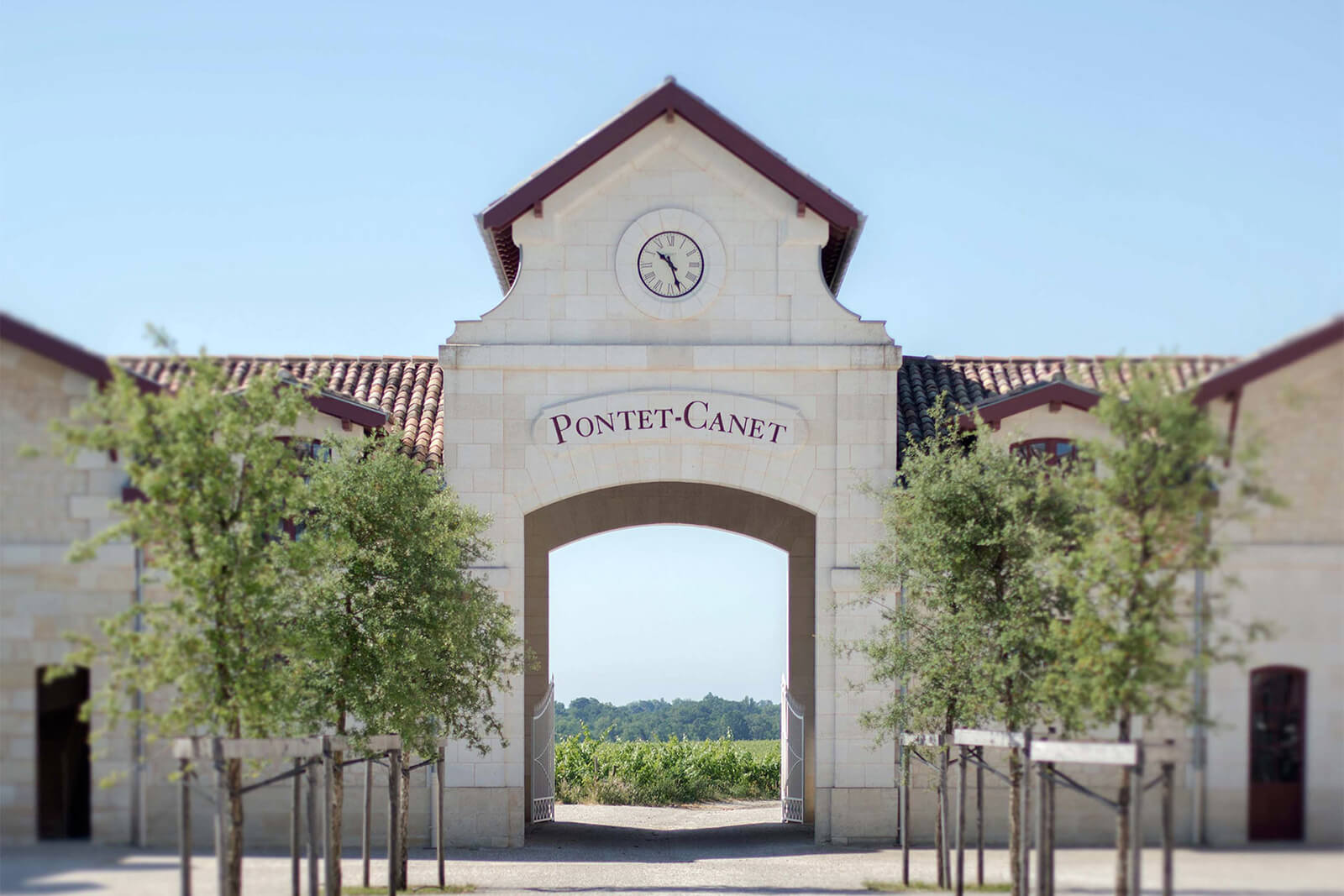
Château Pontet-Canet in Bordeaux
Caillard rated it ahead of both of the Second Growth Pichons Lalande and Baron. Both scored 94-95, something that would once have been beyond comprehension. Pontet-Canet was scored on a par with the legendary St. Juliens, Leoville-las Cases, Ducru Beaucaillou, Gruaud-Larose, and even the iconic First Growths Château Margaux and Haut Brion. Say it isn’t so!
How things change, and how quickly it can happen. I recently saw some statistics suggesting that Bordeaux had dropped to just 30 percent, give or take, of the percentage of sales for the major auction houses. It seems unthinkable. There was a time when Bordeaux so dominated that without it that the auction houses would probably not have even bothered with wine auctions.
These were the days when Bordeaux ruled, daylight second. Burgundy was little more than a curiosity, preferred by a small portion of wine geeks (and I’ll confess that when Burgundy flicked my switch, I crossed to the dark side). Sauternes and ports were pleasant, possibly even essential ways to conclude a lunch or dinner in the manner one should. Champagne was for celebrations (only in the last few years have prices for these great wines finally started to reflect their quality).
Whites were a nice way to warm up, much like a golfer might take a few practice swings before hitting his drive, and they had to be white Burgundy or in a pinch Graves. German Rieslings were once highly regarded but a few wars rather tarnished their appeal. Convoluted regulations did not help. Spain made an important contribution with sherry, but the country’s other wines were holiday fodder only. Italy was not much better. And the New World? Well, you were allowed to walk on the wild side occasionally, but if you wanted to be taken seriously, don’t make a habit of it.
Over the last few decades tastings have become much more focused. Bordeaux ruled those for many years as well, but the idea of those tastings involving anything other than First Growths or the top Seconds (and, yes, possibly the esteemed Third Growth, Château Palmer) was fantasyland stuff unless we were talking the finest Pomerol or St. Émilion.
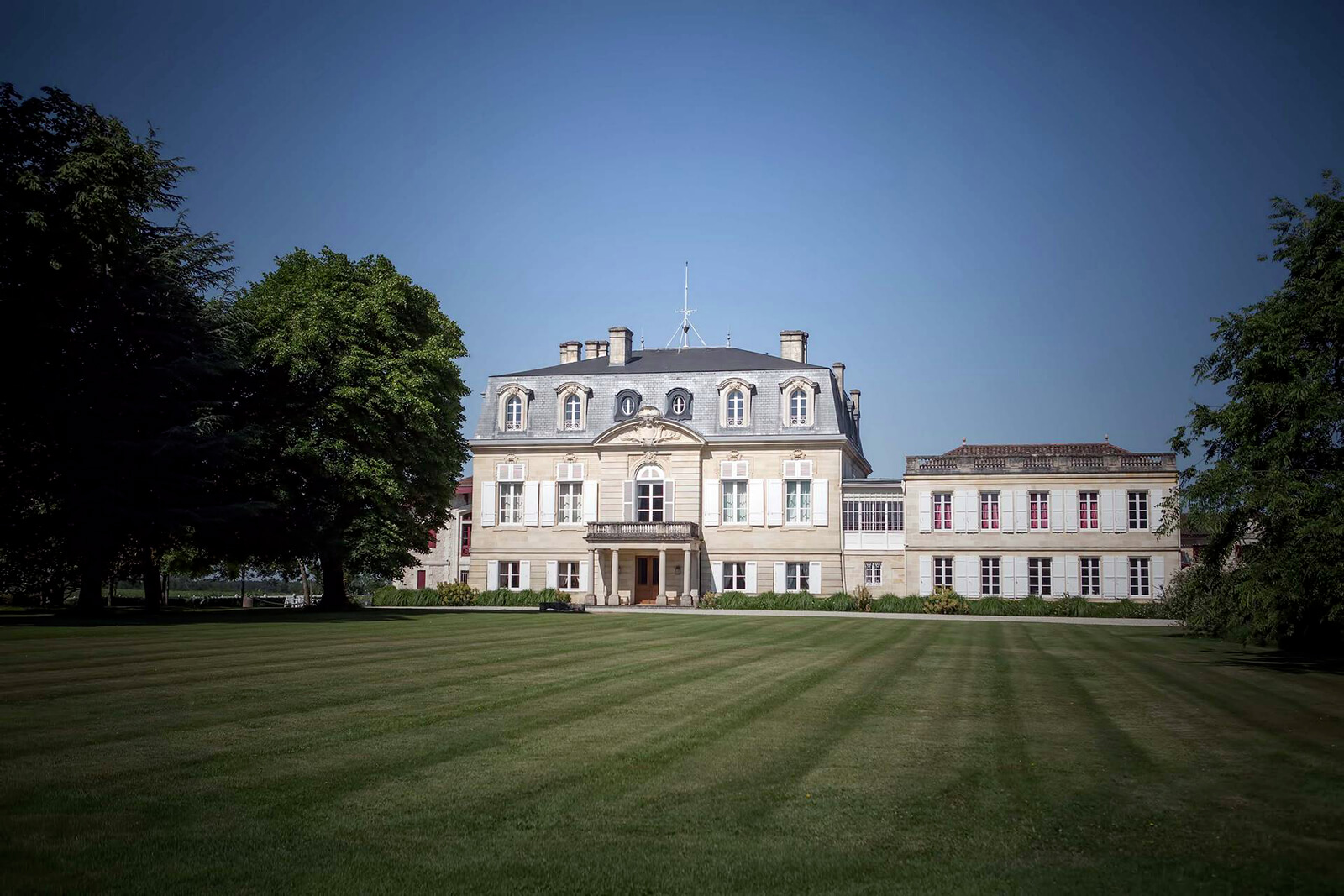
Château Pontet-Canet
A tasting of a Fifth Growth? Please!
As I said, things have changed. Caillard’s scores reflect that. Pontet-Canet is hardly the only non-First to have lifted its game to once unimagined heights. These days, a tasting of some of the lesser Growths attracts nearly as much interest as one involving more elevated wines.
Improvements in viticulture and winemaking, plus the infusion of funds – often considerable funds– has meant that the wines from these producers often rival and sometimes exceed, those of their more celebrated siblings. The prices for these wines, once bargain buying for wines often dubbed “luncheon clarets,” has pushed into the stratosphere in comparison with just a decade or two ago, although many are still relative bargains.
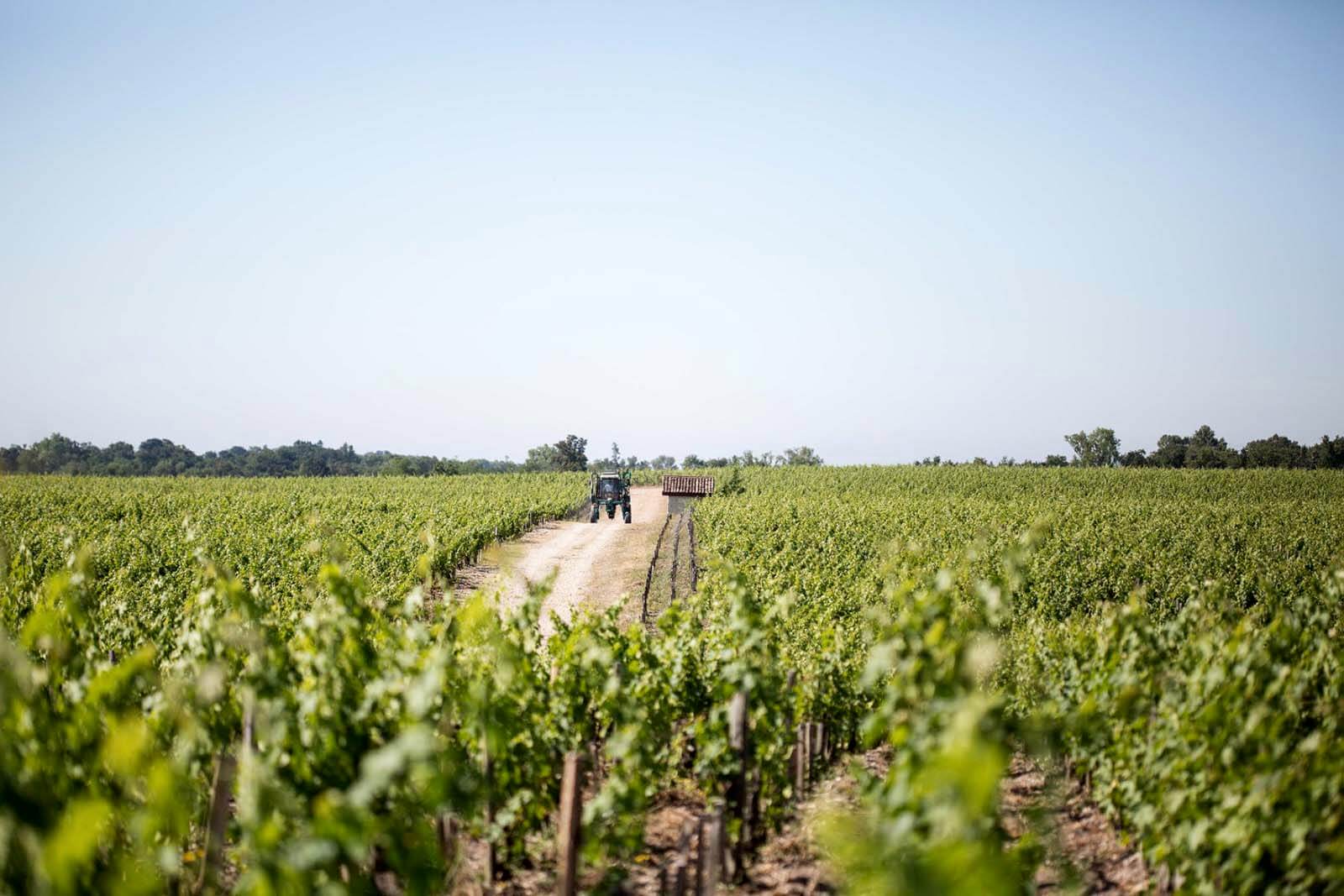
Château Pontet-Canet vineyards
Pontet-Canet is a Fifth Growth in the 1855 Classification, but for the last 15 years, Pontet-Canet has been considered the equivalent of a top Second Growth (like all these things, debate ensues, but I believe that reflects the general consensus).
Clive Coates, in his extensive Grands Vins, first published in 1995, gives detailed histories and notes for all the Bordeaux estates (including Sauternes) he considers worthy. Of the 12 Fifth Growths from Pauillac, he reviews six. One would hardly expect to see some of the very rare estates included, such as Lynch-Moussas, d’Armailhac, Pedesclaux, and Croizet Bages, but that he did not include it gives an indication of where Pontet-Canet stood at the time.
Today, I would suspect it might be the first of the Fifths he would consider, perhaps along with Lynch-Bages. I should note that Château d’Armailhac is another that while rather obscure in the 1970s, 1980s and 1990s is now revitalized (it is part of the Rothschild family estates – that is the Mouton side of the Rothschilds). But in those years, it would have been surprising for it to make the Coates cut.
What of Robert Parker? The first book he ever wrote was his guide to the wines of Bordeaux from 1985. He was not unimpressed by Pontet-Canet, but still had it on a level below other Fifths such as Lynch-Bages and Grand-Puy-Lacoste and could not bring himself to recommend elevating it past Fifth. His scores, other than for the 1961, a legendary vintage that got 90, never went above 86. Even another iconic year, 1982, only managed 85 – a score that these days would be considered insulting to a warm-climate, over-oaked Sauvignon Blanc.
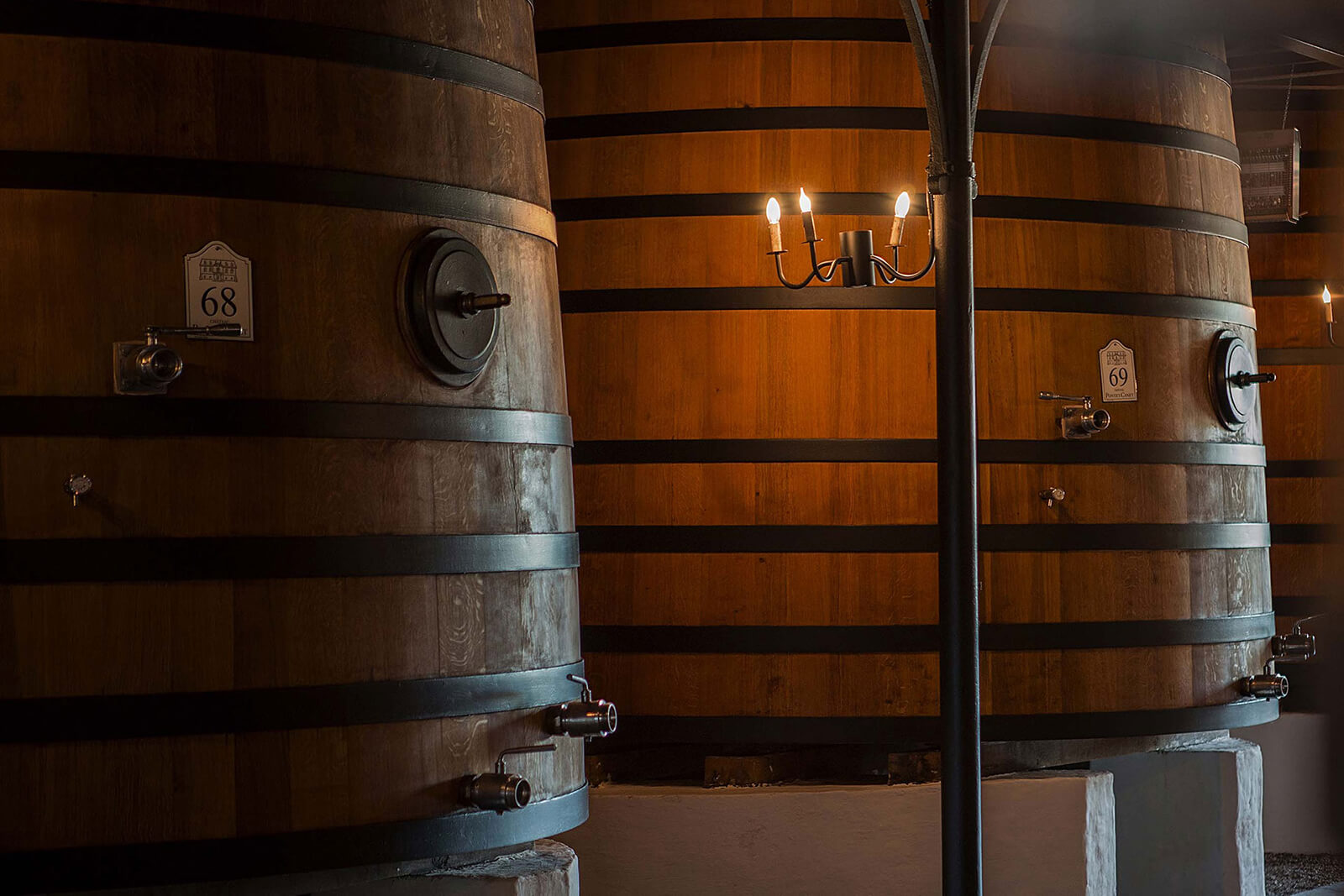
Wine vats at Château Pontet-Canet in Bordeaux
Pontet-Canet was awarded Fifth Growth status in the 1855 Classification, but it is often forgotten that this was one of a number of classifications from back then – it just happened to be the one that became entrenched (perhaps because it was based on the price the wines achieved rather than a subjective assessment of quality).
André Simon has recorded that in 1800 Pontet-Canet was classified as a Fourth. The same applied for the Lawson Classification of 1815. After his time in the region in 1787, Thomas Jefferson, a well-known wine enthusiast (described by some as the world’s first wine bore), prepared his own classification (not like he had anything else to do). Pontet-Canet was a Third Growth for him, the same accolade he gave Mouton.
Terroir in Bordeaux
There is often talk of re-assessing the Classification, but it seems largely set in stone. It is, however, worth spending a moment to consider it and the concept of terroir in Bordeaux. In certain other regions, Burgundy as an example, there can be no serious doubt that terroir is crucial (as is maker and vintage). In Bordeaux, the makers might talk terroir but is it as entrenched and important as some claim?
These musings might have me thrown from a Bordeaux producer’s private jet mid-flight, if I was ever to find myself on one, but I believe that terroir in Bordeaux has long been a blurry concept. The 1855 Classification is based on price/reputation as applied to the producers at the time. Now, undoubtedly that was in turn partly based on the terroir enjoyed by the various estates. But as we have seen in recent years, investment (or the lack thereof) in vineyards and equipment can make a massive difference to the quality of the wines.
For around a century or even more, those estates at the pinnacle were able to charge a premium for their wines in comparison to others and had the money to make such investments and therefore keep their wines at a level of quality to which others could only aspire. Those getting lower prices had little incentive to pump money in as they saw little chance of improving returns.
Fast forward to the last decade or two where cashed-up individuals and entities have bought estates that did not have lofty positions in the Classification nor great reputations, but with patience and large investments have been able to lift those estates. The quality of their wines and reputations are at levels that one would never have imagined possible 20 or 30 years ago. It takes time (hence the need for patience), but it can be done. Suddenly, we have Fifths topping Seconds.
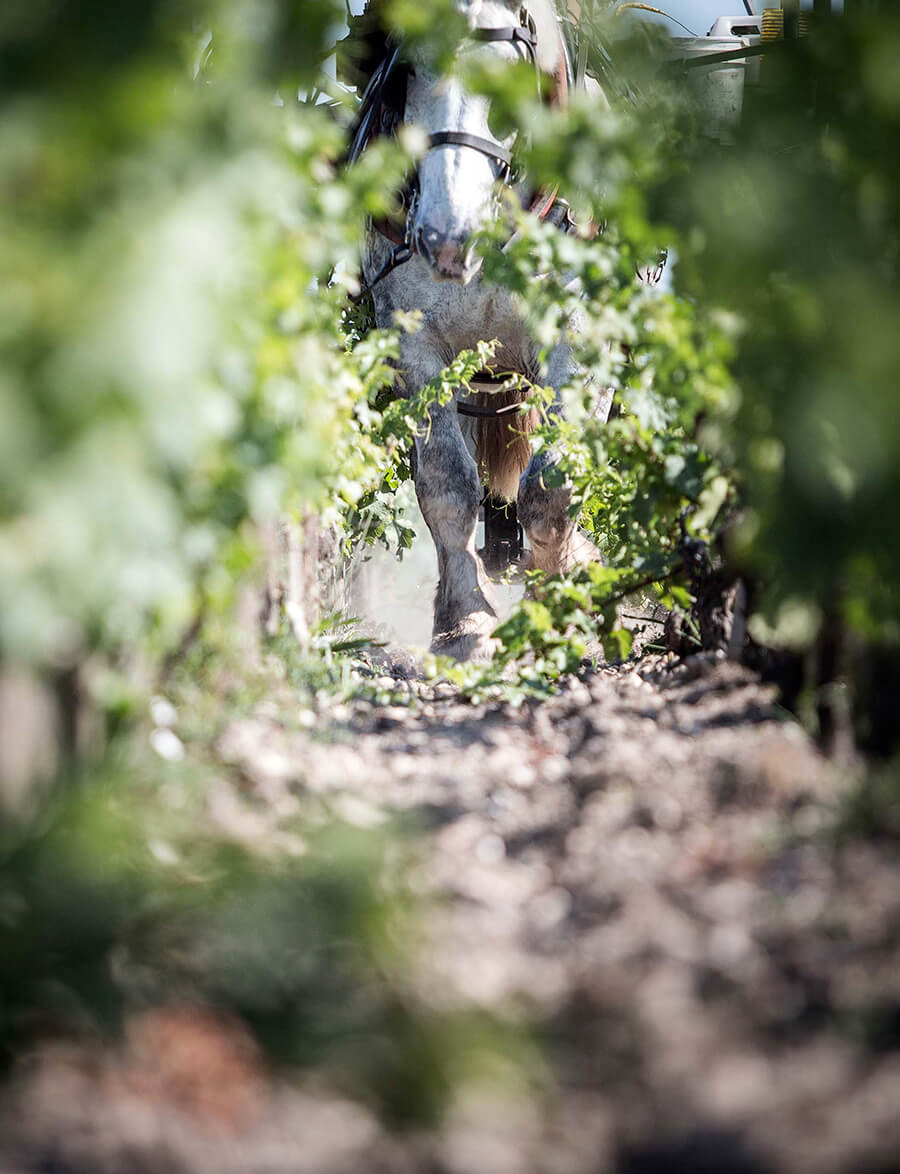
Horse working the vineyards at Château Pontet-Canet
As they say in the classics, but wait, there’s more. If an estate, let’s say a First in Pauillac (and this is hypothetical, of course, although . . . ) purchased a plot of land down the road that was nothing more than a bog completely unsuited to the growing of grapes, that plot automatically becomes First Growth by way of now being part of the vineyards owned by the relevant First. How on earth anyone in their right mind can claim terroir applies in Bordeaux in those circumstances is beyond me. Obviously, this is a very simple overview but it does raise questions.
Brief history of Château Pontet-Canet
To the matter at hand, the ever-improving and exciting Pontet-Canet. The exact “details” tend to vary a little from reference to reference but basically, this is an estate of 80 hectares (under vine – the estate actually comprises 120 hectares). The production is just under half a million bottles with the vineyard 62 percent Cabernet Sauvignon, 32 percent Merlot, 5 percent Cabernet Franc, and 1 percent Petit Verdot. Its neighbor is Mouton-Rothschild, while Château Lafite is also the proverbial stone’s throw away.
The estate was founded in 1725 by Jean-François de Pontet, governor general of the Médoc. His family retained ownership of the estate (and Langoa-Barton) until the French Revolution, although it was a much smaller property at the time. In 1840 it was measured at 20 hectares.
In 1865, the negociant Hermann Cruse purchased the property – so at this stage, it has received its Fifth status under the 1855 Classification and yet was only a quarter of the size it is today, which does make the entire concept of the classification system and terroir look a bit wonky. Speaking of wonky, the Cruse family . . .
Hermann Cruse expanded the place and did make improvements but seems to have seen the entire thing more as producing a commodity than a fine wine. It became known as the “railway claret” as large quantities were sold to the French railway operatives, often as non-vintage bottlings (but it was named “Pontet-Canet”).

Wine barrels at Château Pontet-Canet in Bordeaux
Bottling at the château became compulsory for Bordeaux in 1972. The Cruse family only complied at the very last moment.
These were not actions of a family respecting its estate as a producer of great wine. It was around this time that the great wine scandal of the 1970s took place and the Cruse family was front and center. Labeling, blending, and other practices were shown to be, shall we say, less than legal, although I believe all charges against the Cruse family were dropped or at least not proceeded with. Even so, circumstances meant that the family was forced to sell.
The Tesseron family, respected Cognac producers, stepped in, purchasing the estate in 1975. This family still owns it. Guy Tesseron took over from his father, Alfred, in 1994. Improvements have been gradual, but they have helped this estate became a superstar for the region and a pinup for organics and biodynamics. With the move to biodynamics, which saw its first wine from the 2010 vintage, Pontet-Canet abandoned tractors and began using horses, five to start (Ulysses, Turbo, Reine, Surprise and Universe, in case you were wondering).
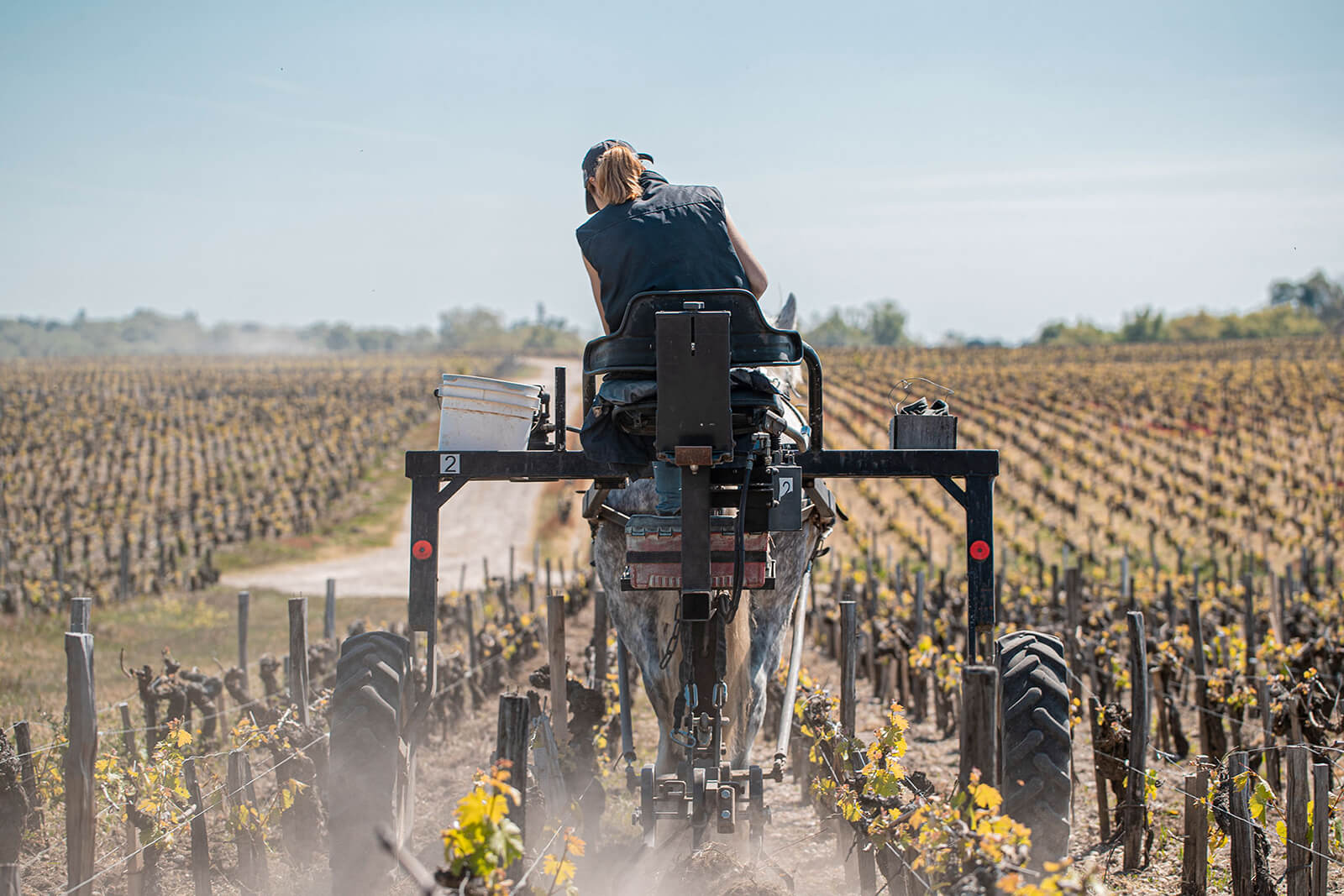
Horse working the vineyards at Château Pontet-Canet
Horses are far better for the soil, not compacting it, as does a tractor. The estate now has 34 horses and plans on adding another 20. Pontet-Canet is acknowledged as the regional leader in biodynamics, and numerous other estates are following its lead in varying degrees. The vines average 45 years of age and are planted at a density of 9,500 vines per hectare. The wine sees a mix of oak, some new, but also amphorae.
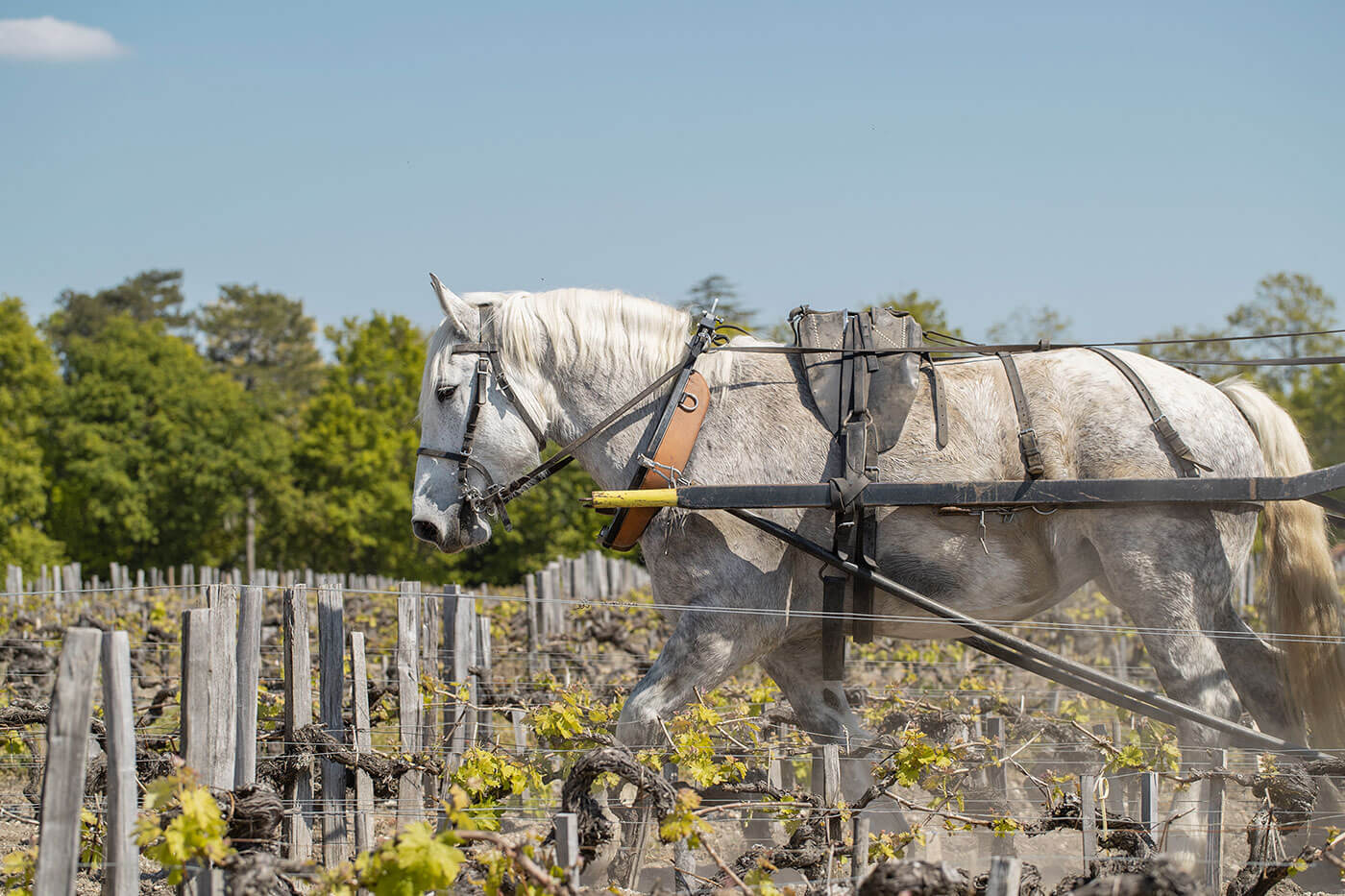
Horse working the vineyards at Château Pontet-Canet
Technical director Michel Comme has been there for decades, and famed consultant Michel Rolland has worked with the team since 1999.
Château Pontet-Canet: a “super Second”
I recently looked at the wonderful Inside Burgundy by Jasper Morris, which has a companion volume, Inside Bordeaux by Jane Anson, equally essential to any good wine library. Anson would elevate the estate to a Second Growth and indeed calls it “everybody’s favorite Super-Second story.”
If you doubt the rise of this estate, consider this. The opening price for this wine between the excellent vintages of 2005 and 2009 doubled. Across serious critics for Bordeaux over recent years, the average scores for Pontet-Canet have topped those of Mouton-Rothschild. The 2009 received the coveted 100 points from Parker. That said, this wine still represents immensely good value in comparison to the top growths.
Our recent tasting, with thanks to About Wine International and Marietjie Brown, saw a vertical of this estate going back to the days before the resurrection. The first wine we tasted was the 1990.
I’ll be honest: I was perhaps less familiar with this estate than I should have been. While I was aware of the pluses and minuses of the vintages we were to taste, and that recent years for Pontet-Canet were much more highly regarded than many from the past, I was not aware of how the quality of the vintages manifested itself in the specific wines. In a perfect world, we would have tasted more wines from recent years, but this certainly gave us a good overview. The anticipated 2010 unfortunately failed to make it to the tasting. One soldiers on.
Château Pontet-Canet: a vertical tasting and notes
1990 – All things being equal, perhaps this should have been the wine of the tasting. Nineteen ninety is a legendary vintage with some truly stupendous wines from Pauillac and Bordeaux in general, but these were “lesser days” for Pontet-Canet. A blend of 60 percent Cabernet Sauvignon, 35% percent Merlot, and 5 percent Cabernet Franc.
For me, a pleasant, mature Bordeaux but hardly anything to write home about. Beef stock notes to the fore. Ripe red fruits, dry herbs, cloves, leather, hints of truffles, and some herbals. It has held up relatively well, though it is certainly never going to be mistaken for a great 1990. Quite a formal structure, very mature. Drink up. 92.
What surprised was how much more mature it was than the 1994, a much lesser year by reputation. After the event, I came across some thoughts by UK critic Michael Broadbent: “I dislike this wine intensely.” No sitting on the fence there. He talks of it being vegetal and there is a note of that. I suspect that overall, it is saved by the vintage.
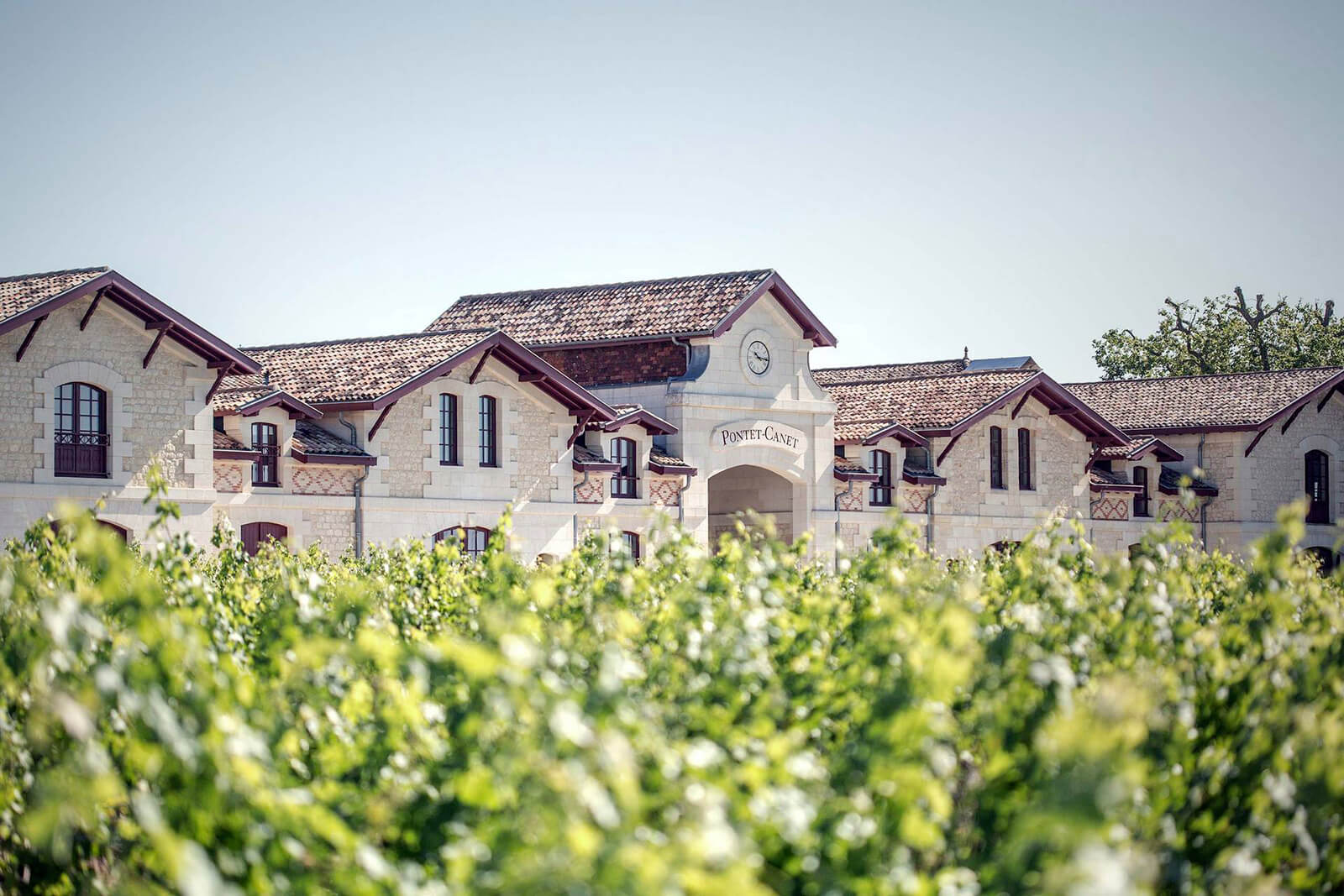
Château Pontet-Canet
1994 – Little expected here as this is considered a very poor vintage in Bordeaux (one vintage chart places 1994 stone last for vintages from the past 30 years in Bordeaux). So this wine came as a complete surprise. This was bright, supple, and plush. Blackberry notes with cassis and vanilla. Fine but firm tannins. A thoroughly enjoyable mature Bordeaux, and so much fresher and more approachable than the 1990 with its 63 percent Cabernet, 32 percent Merlot, and 5 percent Cabernet Franc. 94 for me.
It was only later that I read that this was the vintage that is considered the first in the renaissance and that is easy to see. I doubt that there are very many 1994s that would come close to this today.
1995 – A fair but not great year. Fifty-six percent Cabernet, 36 percent Merlot, and 8 percent Cab Franc. Dry hay, black fruits, some black cherries. A mid-weight style with grip and good length. Truffles, cassis, coffee grinds, but some herbal notes as well. Very pleasant but time to drink this. 92.
1996 – Nineteen ninety-six is one of the highest rated vintages for Left Bank Bordeaux in our tasting. Fifty-six percent Cabernet, 38 percent Merlot, and 6 percent Cab Franc. This drank as well as one would hope for a decent Bordeaux with maturity.
Spices, red currants, blackberries, chocolate, mocha, coffee bean, and fungal notes. A complete, complex, concentrated, and classic nose. Nicely balanced, seamless and with great length. Tobacco leaf notes emerged on the palate. This was the pick of the older wines by the length of the straight. Well cellared bottles will have time ahead if you must, but perhaps best to enjoy them while in this form. 96.
1998 – Considered a great year on the Right Bank but not quite so thrilling on the Left (which is where Pauillac is). Forty-eight percent Merlot, 45 percent Cabernet, and 7 percent Franc. Given how good the Right Bank wines are, this seems an attempt to increase the contribution of Merlot to take advantage of that.
It did not work. The most disappointing wine of the tasting. Lacking the concentration of the better wines, we have dry herbs, cigar box notes, and warm earth, but there is an unappealing vegetal note running through the wine. This should be better. 88, which is probably a smidge generous.
1999 – A fairly ordinary year, which is reflected in this wine combining 61 percent Cabernet, 34 percent Merlot, and 5 percent Franc.
Chocolate, dry herbs, and tomato bush notes. It is vegetal in style but not over the top (although many of us find even tiny amounts of that character to be less than attractive). Chocolate, cassis, truffles as well. Good concentration. There is a hint of the capsicum, but very good length. Better than expected? Just. 91.
2003 – A controversial vintage. Some treat this vintage as the closest thing to the second coming, while others struggle with its blockbuster nature. For me, I have always felt that this horribly hot year was vastly overrated, even by those who are not fans, but if you are a lover of big, bold Barossa Shiraz, then this is the Bordeaux vintage for you. All that said, there are some fine wines to be found, but I’d question whether they accurately represent the “DNA” of both the various houses and the region.
This is broad and lacking focus. A soft finish, interlinked with some firm tannins giving a curious appearance and raising questions about its overall balance. It does have good length. Cassis, chocolate, cherry notes, tobacco leaves. Some good flavors but a little clumsy. 91.
2015 – The final wine is from an excellent vintage and right in the middle of the resurrection of this estate. If any wine was to show where this producer sits today, this was it. Suffice to say, it was the wine of the tasting, daylight second. This is why there is such a fuss about this estate.
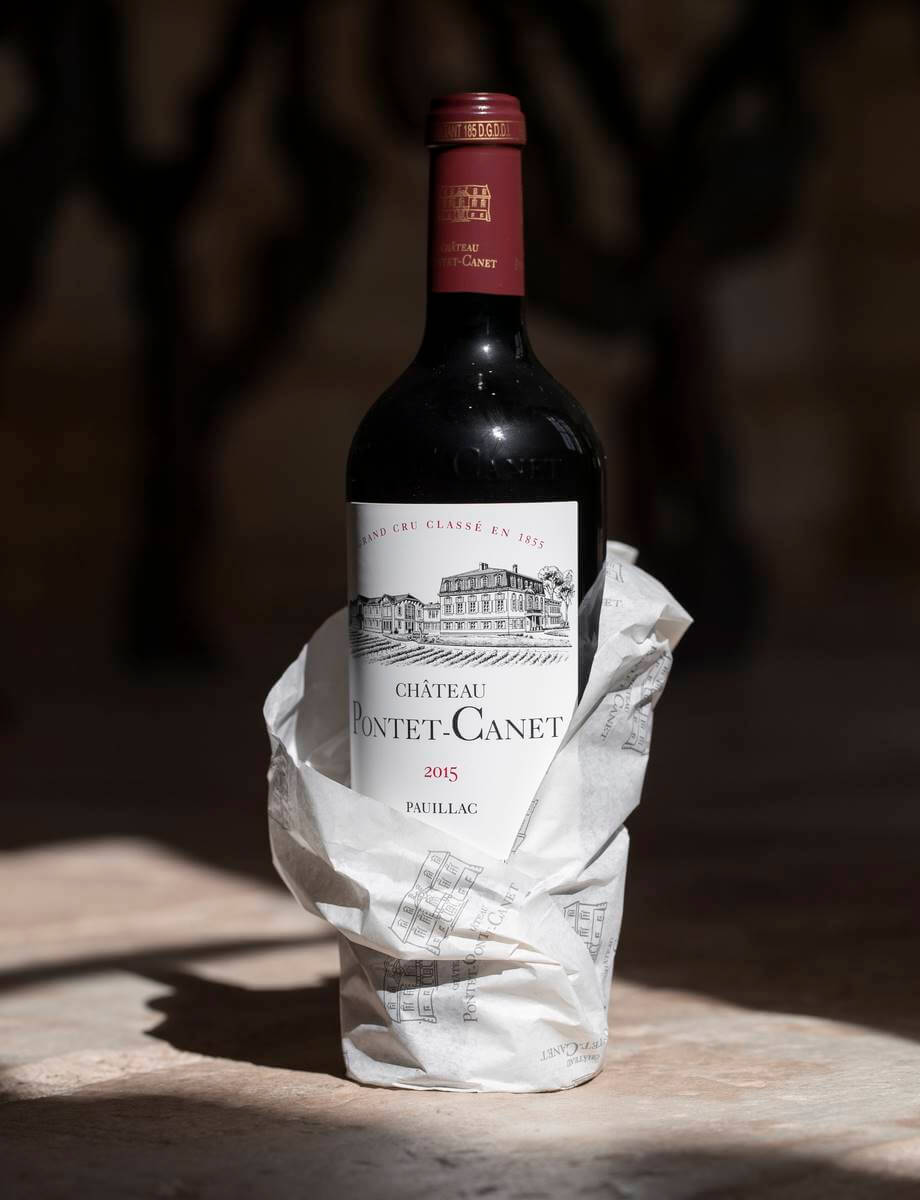
Château Pontet-Canet 2015
Cedar, roast meats, tobacco leaves, black fruits. Great intensity here. A hint of boot polish, in a good way. Firm tannins, fine balance. This is a seriously impressive Bordeaux at any level and has many years ahead of it. Great length, and the intensity is maintained throughout. A brilliant wine (I only wish I had some in my cellar). 98.
In conclusion, Pontet-Canet has become an exceptional Bordeaux estate, drinking far above its Fifth Growth classification. If another classification was instigated today, there would be many pushing for it to rank as at least a Second, if not a First. This is Bordeaux’s great improver. Enjoy it whenever you get the opportunity.
For more information, please visit www.pontet-canet.com.
You may also enjoy:
Anniversary Wine Suggestions For 2022: What To Drink When The Year Is More Important Than The Price
The World’s Best Wine? No Contest: Romanée-Conti By Domaine De La Romanée-Conti
Penfolds Collection 2021 And New Superblends With Tasting Notes
Leave a Reply
Want to join the discussion?Feel free to contribute!



This is such a great write up on Ch Pontet Canet. It’s my favourite “super second”!
Thanks Andrew, much appreciated. Certainly made me realise that I had been woefully neglected the great wines they have been making.
Great write-up… perhaps you should add on tasting notes for the two 100 pointers 2009 and 2010 vintages 🙂
Hi Robin. Thanks for the comment. As i mentioned, a 2010 was planned but unfortunately failed to show on the night but by chance, a friend opened one at lunch a few days ago. glorious stuff. Not sure i’m 100 on it – 98 for me – but certainly stunning stuff.